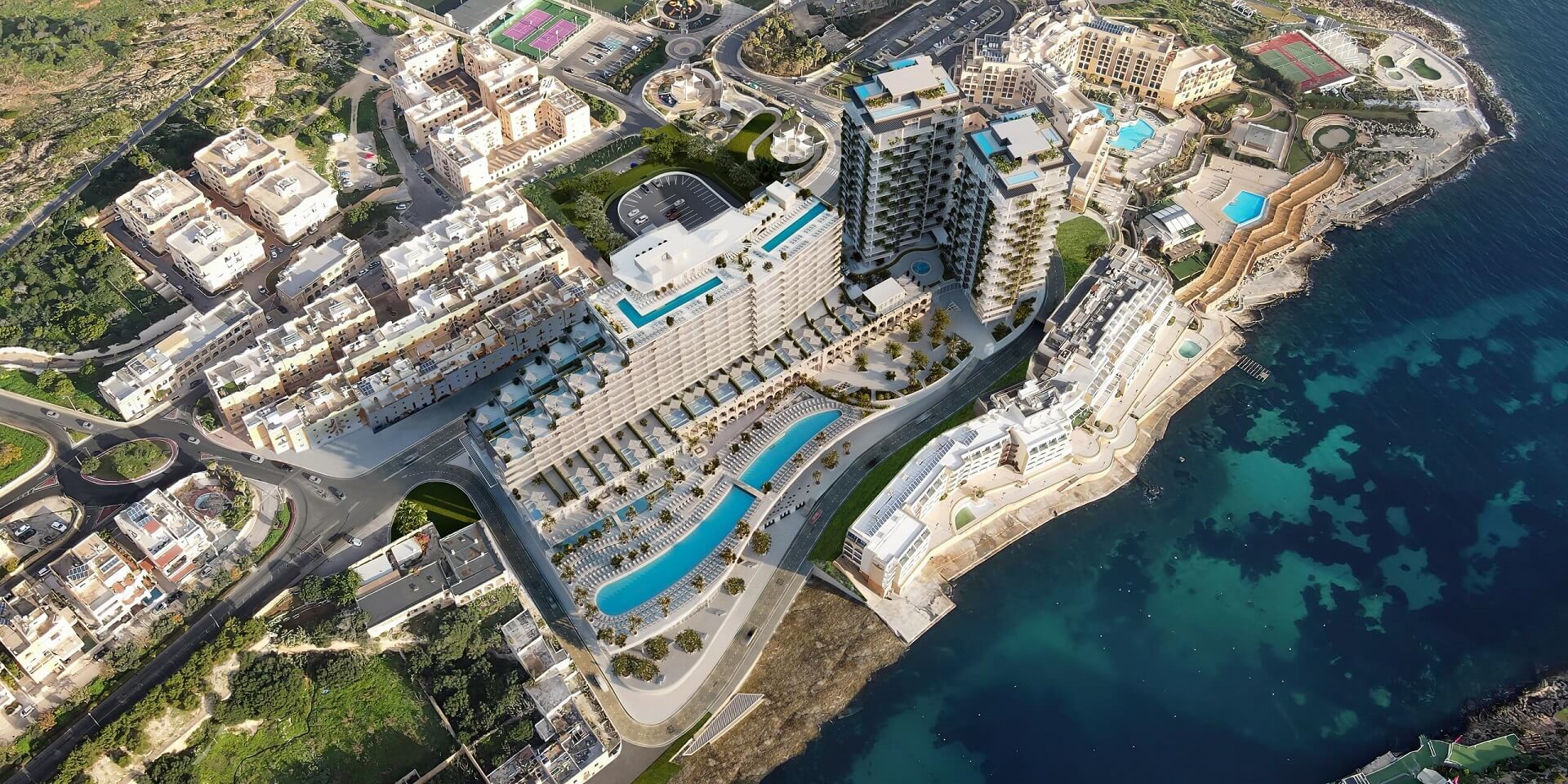Technological advancements have revolutionized many industries, and architecture is no exception. Here, CG visuals became one of the biggest game-changers. With photorealistic renders, clients no longer had to struggle to imagine how future properties would look. But over time, 3D imagery became so common that people needed something more impressive. And the next step after digital images was videos. The usage of 3D animation in architecture has arguably contributed much more to the industry than one might suspect.
Nowadays, almost every architect uses CGI animated presentations to some extent, and for good reasons. To help you understand why it’s the case, our architectural rendering company will go over the history and features of CG animation. Also, we will explain why architects prize it so much. So, let’s begin!
#1. When did architects start using 3D animation?
Architecture professionals began to use CGI to design buildings as early as the 90s with 3D Studio DOS and 3D Studio MAX. But they won’t employ it for marketing for quite a while. That’s because at first, even high-quality 3D visuals did not look photoreal enough. At the same time, only top architecture specialists could afford their usage, mostly by hiring in-house 3D artists. Not to mention that the creation of images alone could take over a week. However, as 3D graphics became indistinguishable from real photos and videos and cheaper to create, architecture specialists started using them en masse.
The 2010s were the golden age of 3D visualization usage for architecture professionals. This was also when they began using 3D animation widely. It’s understandable since during the previous decade high-quality CGI became more available. Hundreds of Archviz studios have entered the market, ready to provide photoreal visuals for a reasonable price and in a short time frame. Although 3D animated materials are still considerably more costly and complex to make than static renderings, almost any architecture firm can now afford one for an important project.
#2. What are the advantages of 3D animation?
So, why did architecture professionals find the usage of 3D animation so fruitful? There are many reasons for that. First, of course, is that animation looks just as impactful as professionally-shot camera footage. This is crucial for architects who present their designs. They need to showcase the future properties in the most appealing way possible, and 3D animation is more than capable of achieving this. It’s not just photoreal, but benefits from the same editing techniques as real-life recordings. A well-made CGI flythrough with professional montage, camera work, and a fitting soundtrack and narration will leave a lasting impression on any client.
This is not the only advantage of 3D animation usage in architecture. The video format allows immersion levels that can only be topped by full-dive VR. A guided 3D movie tour provides an unforgettable experience while being informative at the same time. Thanks to high-quality graphics, the clients would almost feel like they are visiting the future property. And every single selling point will be emphasized by the creators of the visualization.
Immerse clients into your projects with realistic 3D animations
It’s also important that the usage of 3D animation in architecture allows for presenting exterior and interior in tandem instead of showing these aspects of design in separate shots. This gives project presentations integrity.
Last, but not least is the fact that 3D rendering for real estate developers is flexible when it comes to visualizing the environment. 3D artists can create any kind of mesmerizing scene by using various types of lighting. Properties can be visualized in different seasons or times of the day. This can be best realized via the usage of timelapse. Overall, with 3D animation, any presentation idea that can give architecture professionals better odds of winning over clients can be implemented.
#3. What types of 3D animation in architecture are there?
There are multiple types of architectural 3D animation projects. Each has distinct features and applications. The main categories are:
- Exterior and interior animation. These types involve showing future buildings from the outside and inside, respectively. They are often a brief showcase that presents properties in a highly informative way from the most winning angles.
- Mixed animation. It combines interior and exterior views with smooth transitions between the two. This way, a mixed animation presents properties in the most comprehensive manner with a strong sense of integrity.
- 3D Walkthroughs. This type predominantly focuses on the interior, although it can feature the exterior as well. It offers more of a virtual tour experience as it guides viewers through a property, emphasizing the selling points. What makes this type distinct is that the camera in such an animation is positioned at more or less eye level.
- 3D Flythroughs. This type focuses on aerial views for the most part, although it can integrate some elements of walkthroughs. With a flythrough, architecture specialists can show not just the building, but also its surroundings. This allows for spectacular shots, which impress prospects and let them see the neighborhood in detail.
Also, architectural animation can be divided into full-CGI and CG Blending. The difference lies in production technology. CG blending involves incorporating the 3D model of the building into a real video of the environment made from drone footage. Full-CGI animation, in contrast, requires building of the whole scenery from scratch in CGI.
#4. Who and how benefits from architectural 3D animation?
The usage of 3D animation in architecture does not strictly benefit architects only. All architecture-adjacent jobs can benefit from it. The usage of animated CGI is twofold: either as a marketing tool or for conducting presentations for active clients.
It’s hard to overlook how helpful it is for realty developers to visualize unfinished or unfurnished properties. 3D animated marketing materials are a truly powerful tool in the real estate business. Their usage enhances ads on TV, websites, social media, and video hosting services.
Lastly, interior designers also benefit from the usage of 3D animation in architecture a lot. 3D walkthroughs can be great tools in sealing deals for those professionals, as they can showcase every small detail of any space.
Although 3D animation was adopted by architects long after they started using CGI images, it eventually caused a blast. Now, many 3D visualization studios worldwide provide professional CG video creation services. And industry specialists gladly make use of them. It’s understandable, as 3D animation showcases projects in the most informative and visually appealing way. It shows projects in motion, providing a life-like and immersive experience. And on top of that, it benefits from good montage, editing, soundtrack, and voiceover.
For these reasons, not only architects can achieve success by using CG animation. Real estate developers and interior designers make use of it as well. And since there are many types of animated CGI, each expert can choose the one that fits their project.
Schedule a free demo of 3D solutions for your business
Need to amaze even the pickiest of clients with your project presentation? Order architectural animation services and ensure that your designs are shown in the best possible way!

Catherine Paul
Content Writer, Editor at ArchiCGI
Catherine is a content writer and editor. In her articles, she explains how CGI is transforming the world of architecture and design. Outside of office, she enjoys yoga, travelling, and watching horrors.



